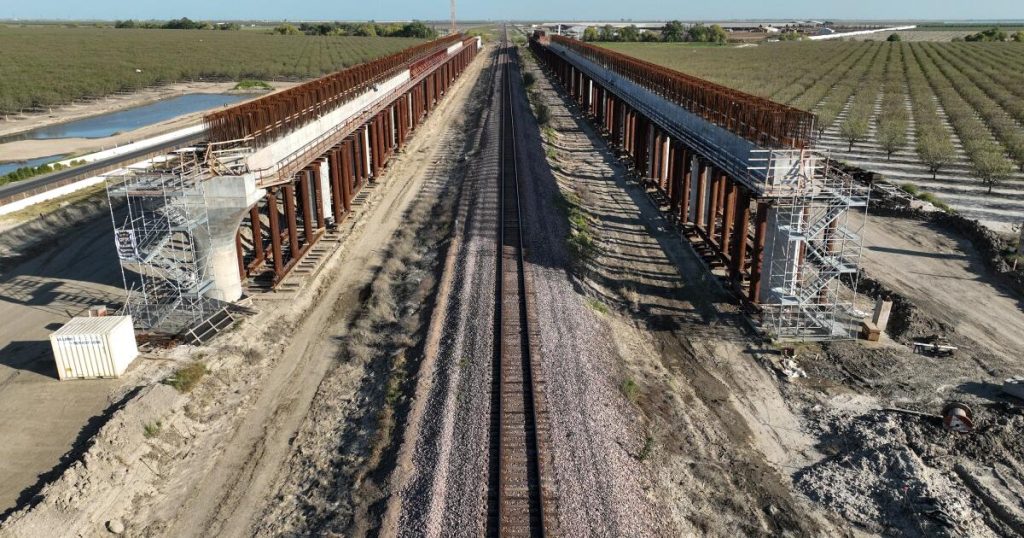
As California’s high-speed rail project faces pushback under the new presidential administration, state leaders announced Monday that it will eventually connect Los Angeles to the Bay Area, while also providing high-speed rail between Southern California and Las Vegas. He promoted the progress of the Connect project.
Construction on this project is limited to a 119-mile stretch of the Central Valley. Gov. Gavin Newsom and transportation officials said at a news conference in Kern County that the line will someday connect to Brightline West’s private high-speed rail line to Nevada, a planned 54-mile stretch from Palmdale to Victor Valley. He said there is a possibility of connecting to the corridor.
A proposal from the High Desert Corridor Joint Power Authority to provide connectivity between high-speed rail services is under environmental review.
The agency’s executive director, Arthur Sohikian, said the connection would “create a seamless high-speed rail network that will transform transportation in our region and beyond.”
But there is still no clear timeline for when the entire project will be completed or how the California High Speed Rail Authority will raise the tens of billions of dollars needed to complete it.
Newsom disapproved of the criticism and “cynicism” the project has faced regarding past decisions. The project had particular shortcomings, including a route through the east side of the San Joaquin Valley rather than a more direct course along Interstate 5 along the less populated west side.
“There is no going back. We have to accept responsibility for the situation we are in and that is exactly what we are doing,” he said.
Newsom pointed to the thousands of jobs the project has brought to the Central Valley and emphasized that this project is about infrastructure, not just rail. This plan is integral to Central Valley communities’ plans to revitalize business districts and foster economic growth.
The rail authority’s new chief executive, Ian Chowdhury, said the project had strong prospects.
“The future of high-speed rail in the South West is bright. It’s happening and we’re proud to be at the forefront of this transformation in transportation,” he said.
The project faces significant funding uncertainty, more than $100 billion more than the budget originally proposed to voters. That uncertainty comes as President-elect Donald Trump’s Cabinet reshuffle targets the project as a waste of federal funds and Rep. Kevin Kiley (R-Rocklin) announced plans to introduce legislation to defund it. has been increasing in recent months.
Transportation experts say other funding options need to be considered.
State Sen. Dave Cortese (D-San Jose), chairman of the Transportation Committee, plans to introduce legislation that would explore public-private financing options to close the gap, saying in a statement Monday that he is facing “uncertain… “We don’t want to tie funding together.” The state’s cap-and-trade reinstatement and the Trump administration’s challenges remain unaddressed. ”
“The way we do this is through proven public-private partnerships that have historically funded transportation projects in every major city in California,” he said.
Source link




